Wildfire rank
The BC Wildfire Service uses a ranking scale from 1 to 6 to describe fire behaviour based on a set of visual indicators.

The following page describes fire behaviour "ranks" and examples of firefighting tactics that may be used to address that type of fire behaviour:
Rank 1 – Smouldering ground fire
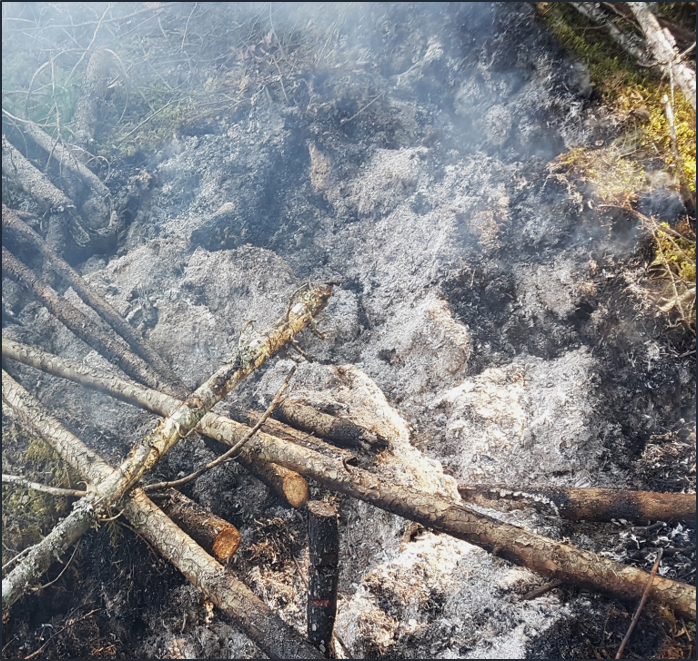 Characteristics
Characteristics
- Smouldering ground fire
- No open flame
- White smoke
- Slow (i.e. creeping) rate of fire spread
Examples of firefighting tactics
- Direct attack with ground crews using hand
- tools and water delivery systems (i.e. pumps and hose).
Rank 2 – Low vigour surface fire
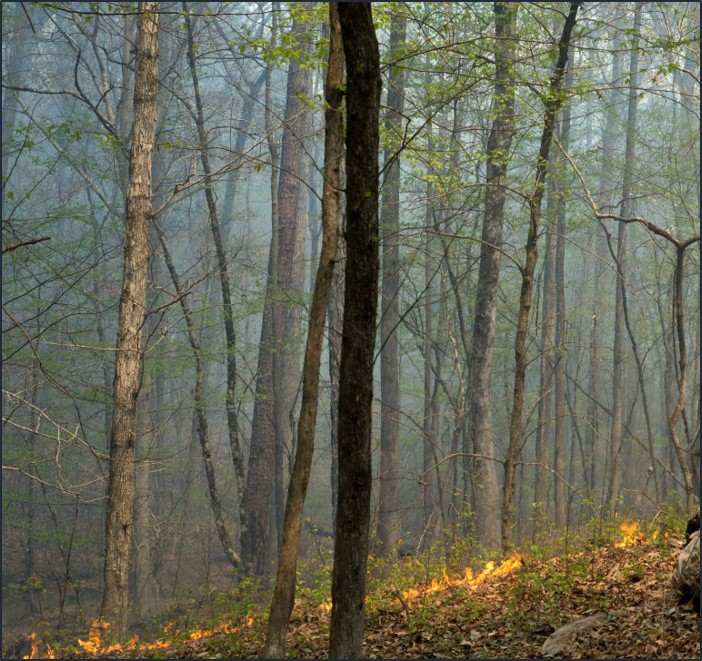 Characteristics
Characteristics
- Surface fire
- Visible, open flame
- Unorganized or inconsistent flame front
- Slow rate of spread
Examples of firefighting tactics
- Direct attack with ground crews using handtools, water delivery systems, or heavy equipment;
- Hand constructed control lines and lines that have been cleared of combustible material will likely be successful.
Rank 3 – Moderately vigorous surface fire
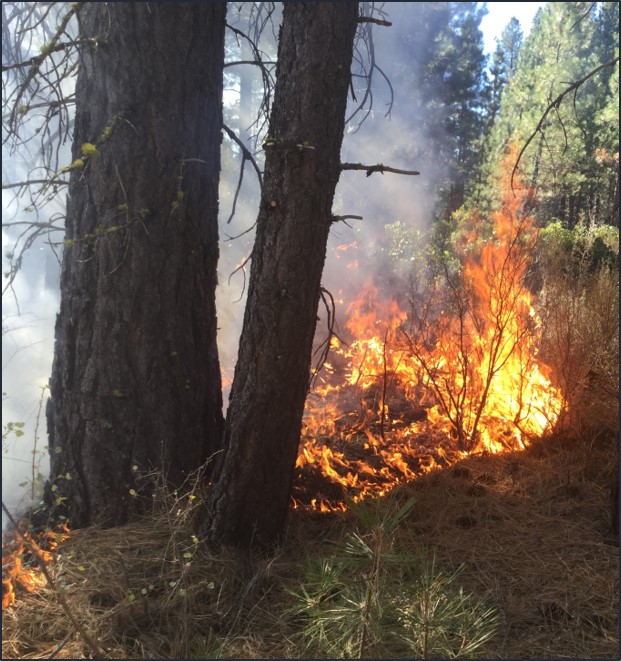 Characteristics
Characteristics
- Organized flame front – fire progressing in organised manner
- Occasional candling may be observed along the perimeter and/or within the fire
- Moderate rate of spread
Examples of firefighting tactics
- Hand constructed control lines alone are likely to be challenged
- Ground crews conducting direct attack may require air support from fixed-wing air tankers, skimmers or helicopters conducting bucketing or tanking operations
- Control lines constructed by heavy equipment will generally be effective.
Rank 4 – Highly vigorous surface fire with torching, or passive crown fire
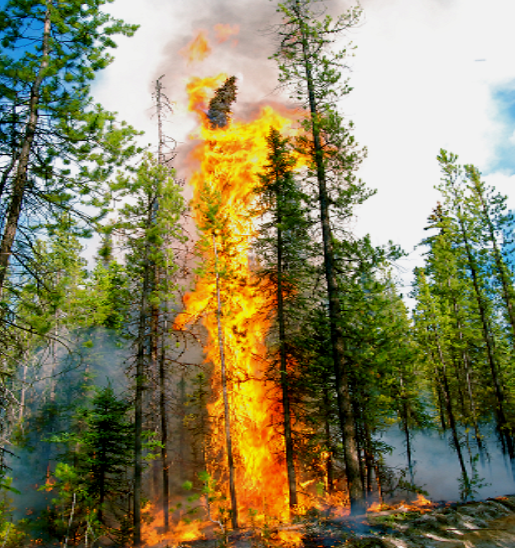 Characteristics
Characteristics
- Grey to black smoke
- Organized surface flame front
- Moderate to fast rate of spread on the ground
- Short aerial bursts through the forest canopy
- Short-range spotting
Examples of firefighting tactics
- Ground operations may not be successful at the head of the fire
- Indirect tactics may be required to bring the head of the fire under control
- Parallel attack may be used along the flanks of the fire to direct the head into favourable ground or fuels
- Air operations may be required to support ground personnel
Rank 5 – Extremely vigorous surface fire or active crown fire
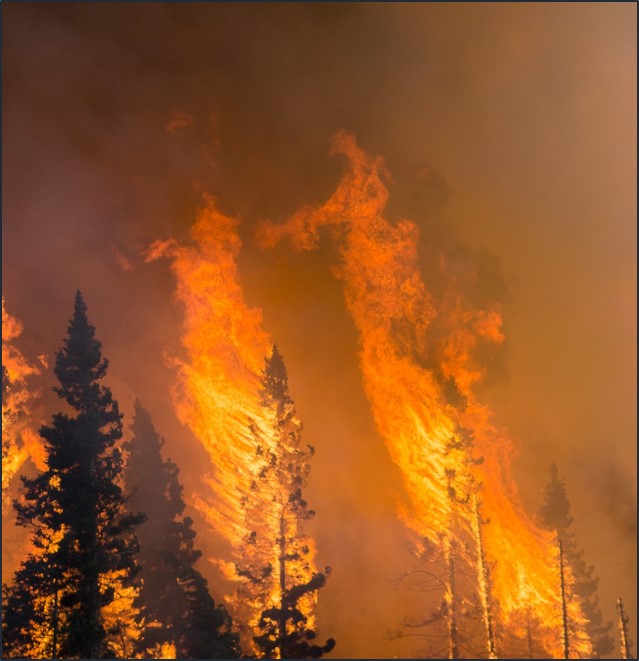 Characteristics
Characteristics
- Black to copper smoke
- Organized crown fire front
- Moderate to long-range spotting and independent spot fire growth
Examples of firefighting tactics
The limited options available include indirect attack and planned ignitions to remove fuel in the path of this type of fire behaviour. Ground operations are often restricted to fighting the least active sections of the fire or conducting ground ignition operations from secure control lines with readily available escape routes and safety zones.
Rank 6 – A blow up or conflagration; extreme and aggressive fire behaviour
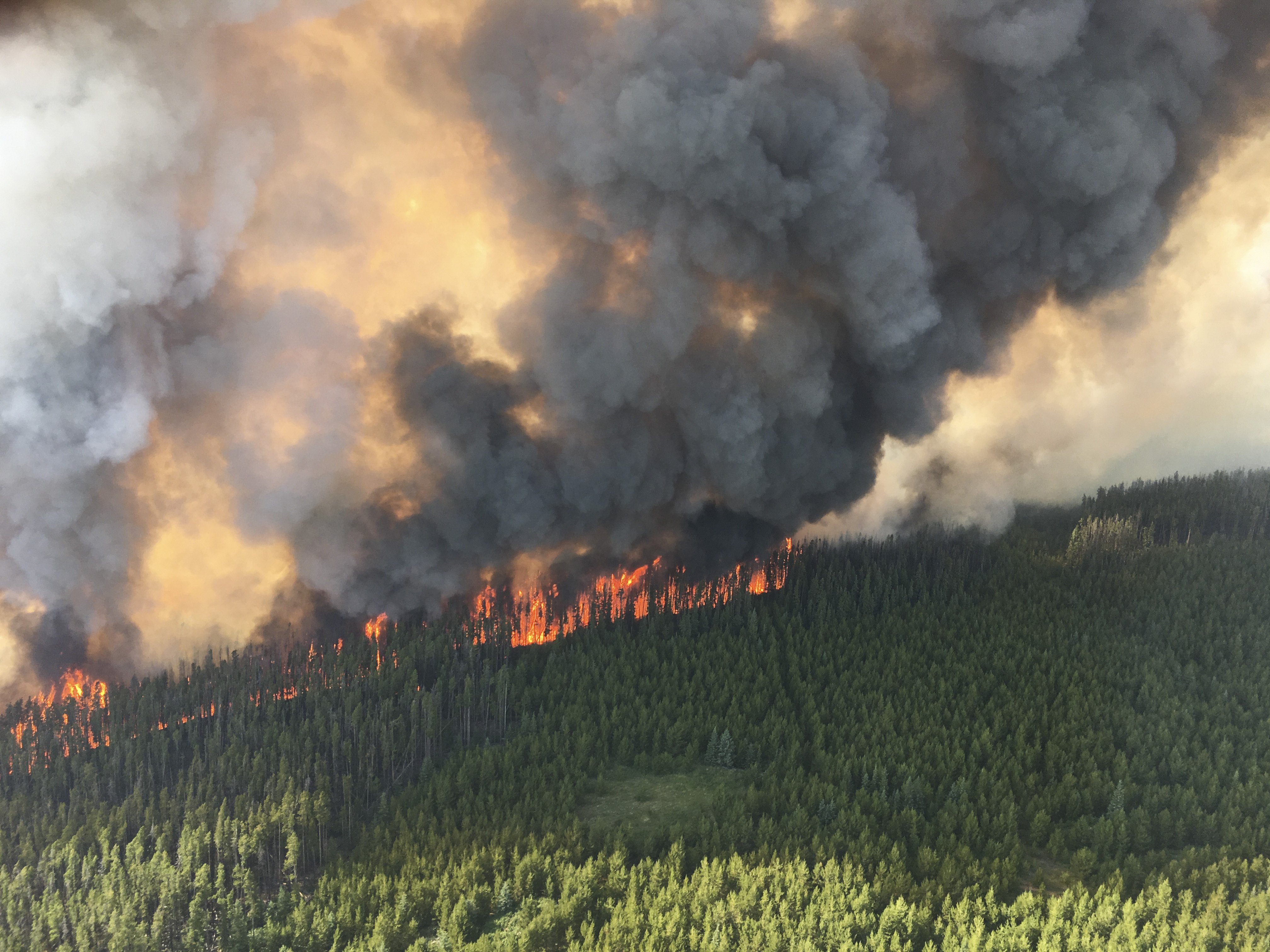 Characteristics
Characteristics
- Organized crown fire front
- Long-range spotting and independent spot fire growth
- Possible fireballs and whirls
- Violent fire behaviour probable
- A dominant smoke column may develop which influences fire behaviour
Fire suppression strategy
Firefighting under these conditions is extremely dangerous. Suppression efforts will be well away from active fire behaviour and may include preparing structure protection measures or conducting indirect large-scale ignition operations in an attempt to steer the fire. Often, the safest and most prudent strategy is to pull resources back to safe areas, ensure that personnel and the general public are safe, and wait for fire behaviour to lessen before re-engaging in fire suppression operations.
